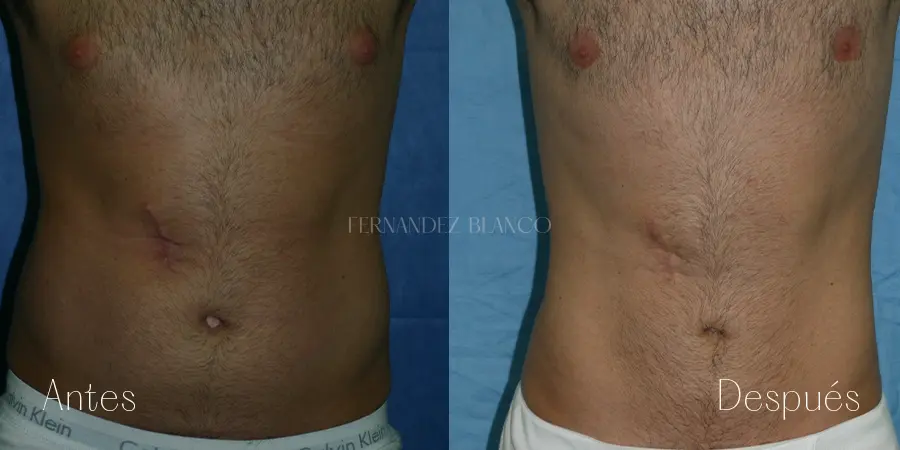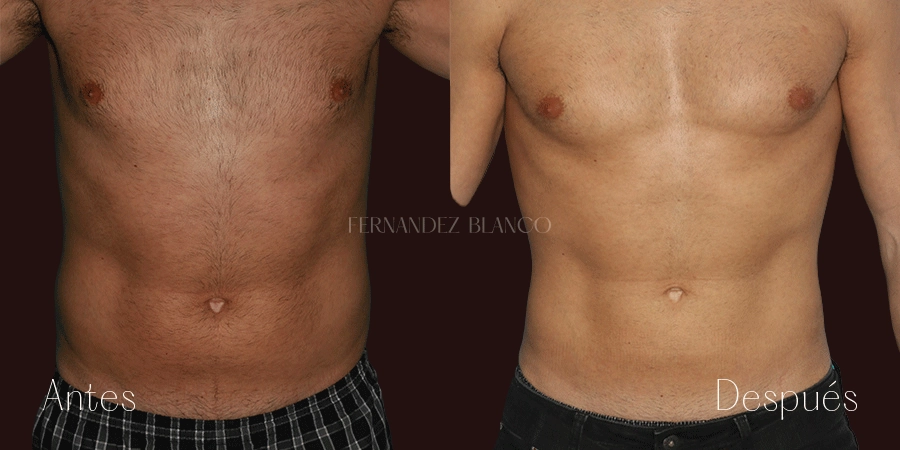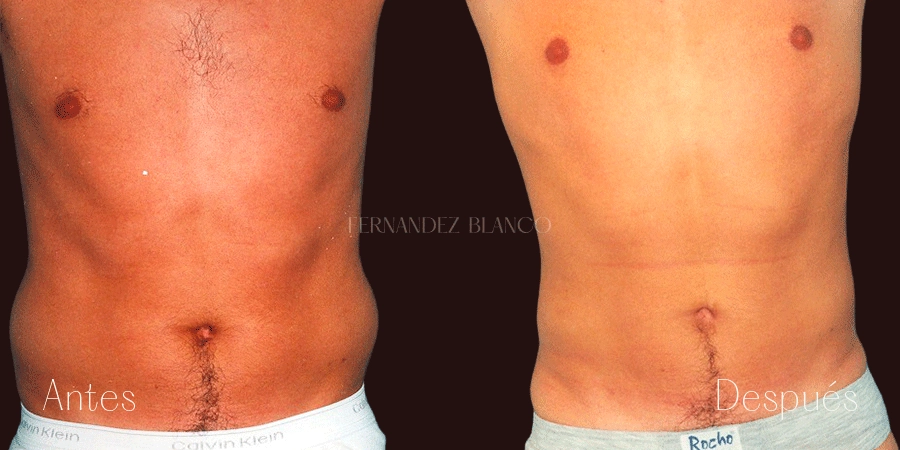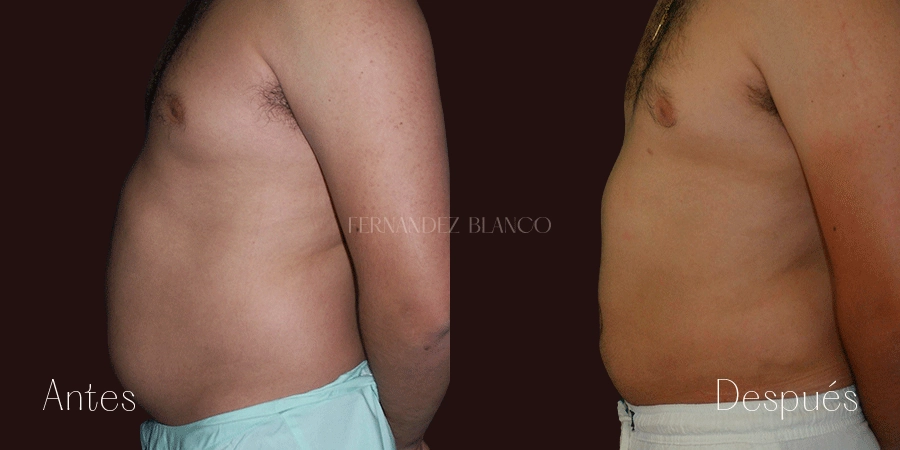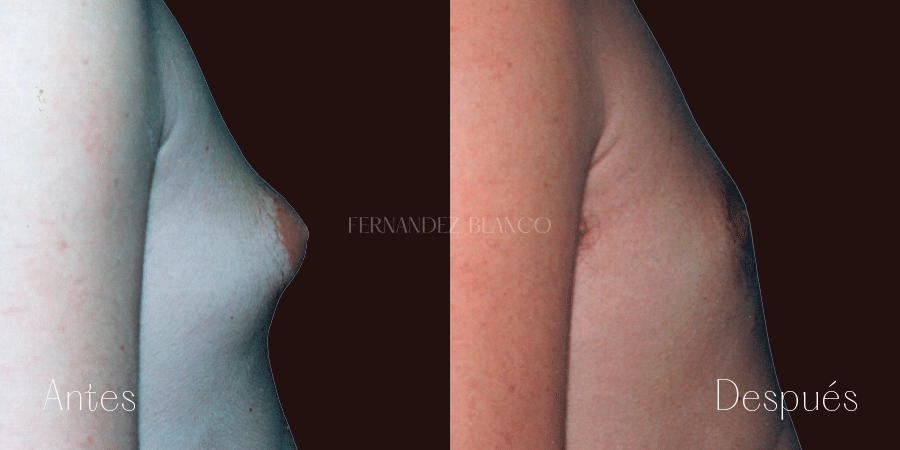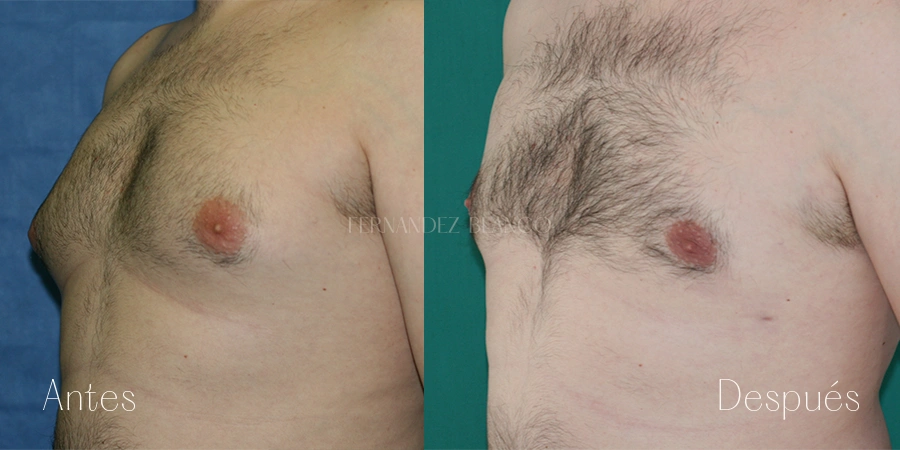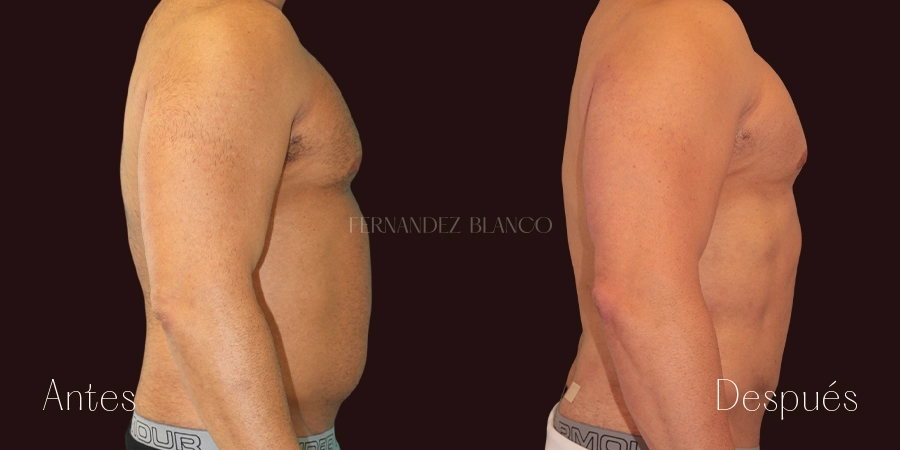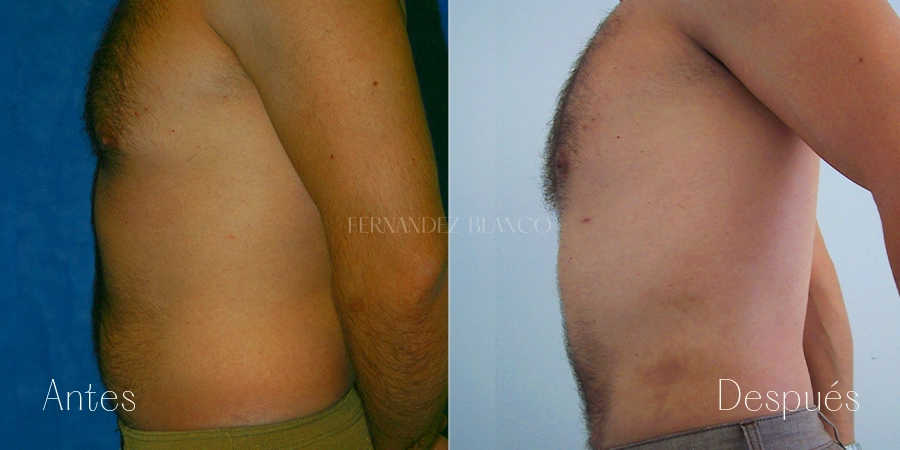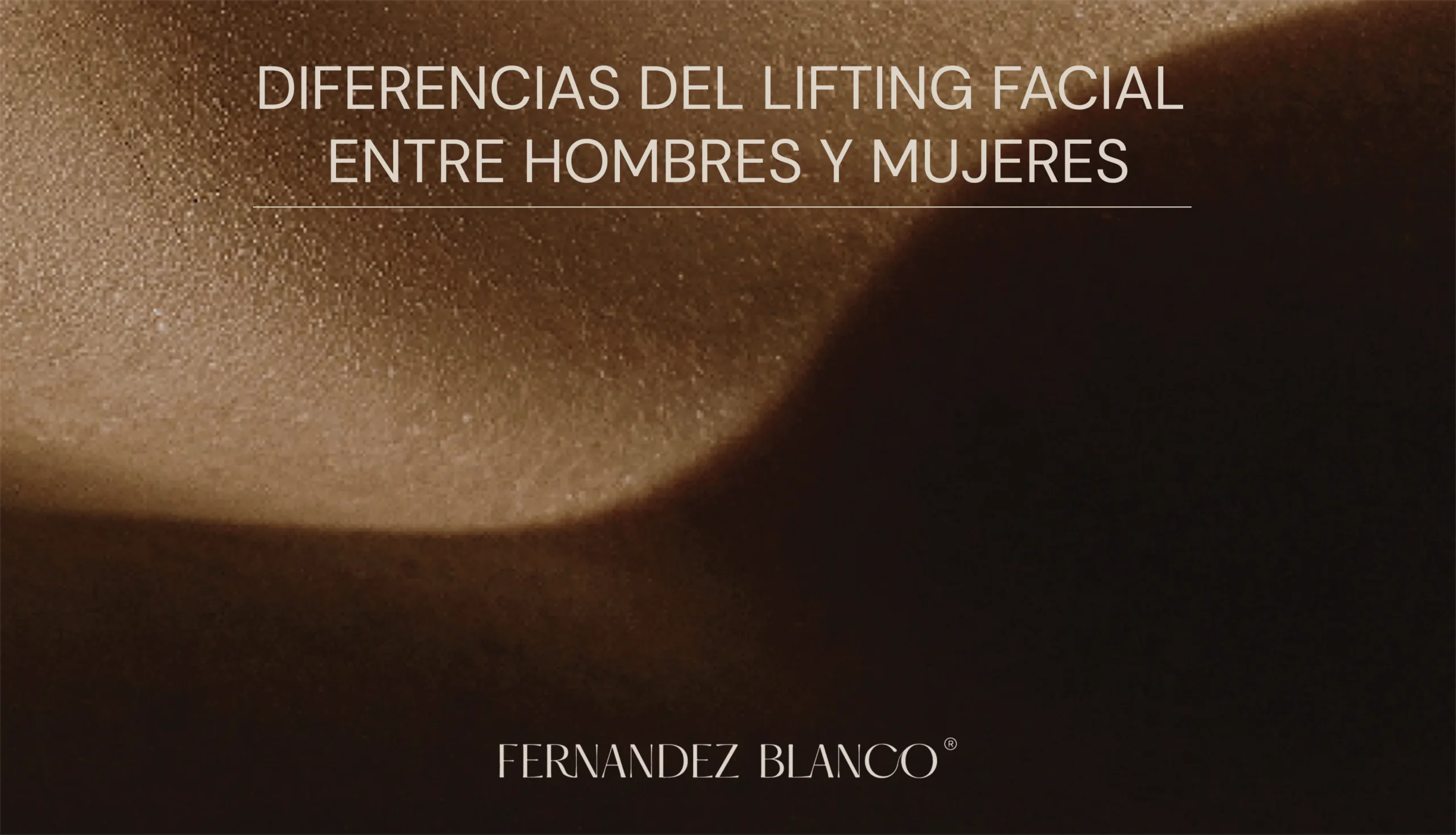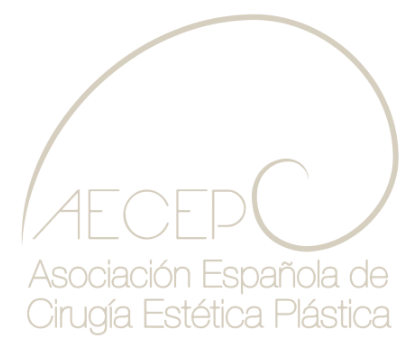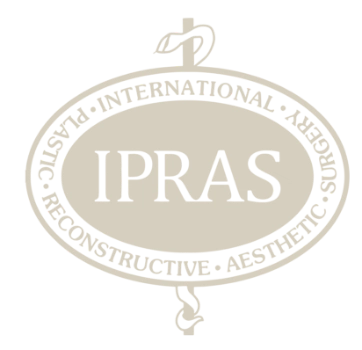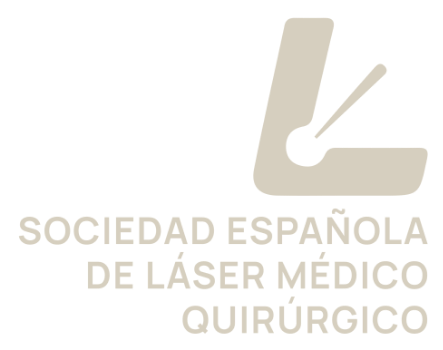Cirugías Masculinas
¿EN QUÉ
Ginecomastia
La Ginecomastia es la cirugía que se realiza para reducir el tamaño del pecho masculino. Puede estar provocado por un desequilibrio hormonal o por un cúmulo de grasa que da lugar a una mama abultada y antiestética.
Prótesis de mandíbula o gonion
Indicada para rostros afilados y caras alargadas. El implante se introduce sobre los ángulos de la mandíbula, ensanchándola y aportando virilidad al rostro masculino.
Prótesis de pectoral
Con este procedimiento, conseguimos aumentar el tamaño del pectoral masculino mediante un implante de prótesis.
Prótesis de gemelos
El aumento de gemelos es una intervención en la que se implantan prótesis de gel de silicona en la pantorrilla, con el fin de modelar las piernas y aumentar el volumen del gemelo.
Marcación Abdominal
En la marcación abdominal, el principal objetivo no es la pérdida de peso sino la definición abdominal. Para esta cirugía se utiliza la técnica de liposucción.
Si el paciente es candidato, se puede realizar un tratamiento combinado con Morpheus8, cuyo objetivo es adherir aún más la piel a la pared abdominal, para no solo mejorar la calidad de la piel si no la definición de la cirugía.
TIPO DE ANESTESIA
Anestesia general
TIEMPO DE RECUPERACIÓN
2 a 3 días
RESULTADO DEFINITIVO
1 mes
Casos
Proceso
INTERVENCIÓN
El tratamiento quirúrgico de la ginecomastia glandular debe ser con resección de la glándula a través de una incisión en la areola. Las ginecomastias adiposas se tratan con liposucción, obteniéndose muy buenos resultados con mínimas cicatrices.
Para los implantes de prótesis, las incisiones no serán mayores de 4 centímetros y siempre se procura que sean lo menos visibles posible, colocándolas en lugares como la mucosa de la boca, la línea de la areola del pezón o en la cara posterior de la rodilla. En el caso del pectoral y el gemelo, la prótesis se implanta detrás del músculo correspondiente de manera que queda incluida en la estructura muscular dando un aspecto natural en el movimiento.
En una marcación abdominal, las incisiones no superan los 4 mm y a través de una liposucción, se provoca una depresión en la línea la línea alba y los tres paquetes musculares superiores al ombligo.
POSOPERATORIO
El periodo de recuperación para un implante es bastante llevadero. Durante unos meses el paciente se verá inflamado y con una sensibilidad extraña en la zona que irá recuperando poco a poco su normalidad. El paciente requerirá de una baja de una semana para incorporarse a la vida laboral y deberá esperar el periodo de un mes para poder realizar actividad deportiva.
En el caso de la marcación abdominal, el tiempo de recuperación será proporcional a la cantidad de grasa extraída. La actividad deportiva se podrá reiniciar a partir de la 4ª semana. La inflamación desaparece en un plazo de 10 a 20 días después de la intervención.
Vídeos Informativos
Preguntas Frecuentes
¿Hay riesgo de cápsula en un implante de pantorrilla?
No hay peligro de cápsula por el lugar anatómico en que se realiza el implante.
¿El implante de pantorrilla afina el tobillo?
Realmente no, al aumentar el volumen de la pantorrilla ópticamente parece ser más fino.
¿Se puede retirar una prótesis de gonión con facilidad?
La prótesis implantada en caso de no ajustarse a los deseos del paciente puede ser fácilmente retirada volviendo al estado inicial sin modificaciones estéticas.
¿Cómo es el resultado de una prótesis de pectoral?
Se trata de un resultado muy natural, si se escoge el tamaño adecuado para cada paciente y se realiza un buen trabajo en la intervención.
¿Es necesario llevar faja en la ginecomastia?
Para ambos tipos de ginecomastia sí, se llevará una prenda de presoterapia con la intención de controlar la inflamación y garantizar el resultado.
Infórmate,
pide una cita
Nuestro equipo médico te asesora sobre el tratamiento que mejor se adapte a ti, el proceso quirúrgico, los posibles riesgos y todo lo que necesitas saber antes de afrontar una decisión tan importante.
*Las cirugías se realizan en un hospital debidamente autorizado.
